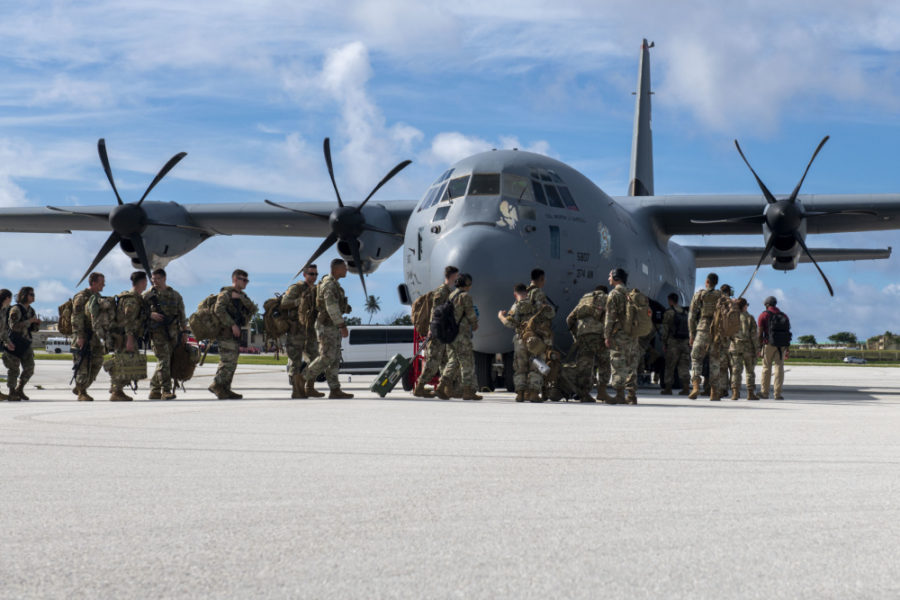The Air Force is overhauling its force generation and deployment model. The aim is to provide a standardized schedule that both Airmen and combatant commands can understand while also providing enough down time for rest and training.
Air Force Chief of Staff Gen. Charles Q. Brown Jr., in an exclusive interview with Air Force Magazine, outlined the new Air Force Force Generation (AFFORGEN) model, which he said will be “better aligned with how we present Airmen and airpower to support the joint operations, while at the same time, it actually preserves some of that readiness, not only for today, but for the future.”
The model, which the Air Force expects to reach initial operational capability in fiscal 2023, is broken down into four “bins,” each lasting six months for a total 24-month cycle. These include:
- “Available to Commit.” This is when a unit is deployed, or ready to go at a moment’s notice for things such as short-notice task force or dynamic force employment deployments. “Commit is our traditional, you’re deployed, or you’re on the bubble, you’re ready to go,” Brown said.
- “Reset.” After the six-month deployment or standing-by for operations, these Airmen will have six months to come home and take a breath. “Reconnect to your family, but also look at your basic skill sets you need to, depending on what the commitments are, if you got deployed or not. So it’s a chance for you to reset,” Brown said.
- “Prepare.” After six months of rest and a focus on the basics, Airmen will then rotate into a six-month phase in which they increase their preparation for a possible future deployment. “Now you start to up your level of training and expanding beyond just your unit and start to work with others,” Brown said.
- “Ready” After preparing, the next six-month phase will have Airmen in a “ready” phase in which the focus is on high-end, more intense, multi-unit training. This would include things such as participating in a certification exercise with multiple wings, capstone exercises such as Red Flag, Red Flag-Alaska, or the USAF Weapons School. This is the time to ensure Airmen at peak readiness are able to move back to the deployment, or “Commit,” phase.
While the goal is to have AFFORGEN reach IOC in fiscal 2023, some units are already starting to move toward it, because the Air Force can’t just “flip the switch and go, ‘OK, … so we’re starting today,’” Brown said.
“The thing that this is going to help us out with is, our United States Air Force is very popular,” Brown said. “And so we get asked, we get pulled into a lot of things. But I want to be able to use this to have a little bit of discipline about how we do things, how we communicate to the Joint Force, so we can preserve readiness.”
Under previous force generation models, such as the air expeditionary force, the Air Force was often stretched thin, with high demand, low dwell time, and low corresponding readiness.
“We would actually rip ourselves apart to satisfy all the requirements,” Brown said. “And what we found is each of the [major commands], depending if you are fighter vs. bomber vs. ISR vs. mobility—we’re all doing things just a little bit differently.”
The Air Force needs to standardize its force generation model across these MAJCOMs, Brown said.
“Part of our discussion with the MAJCOM commanders … was, ‘We’ve got to have a standard model that we all use, that we can talk about, and be on the same page, particularly as we talk to the Joint Staff,’” Brown said.
As the Air Force moves toward Agile Combat Employment and begins operating from different locations without the same established presence that Airmen are used to at major Middle East bases, the deployment model of a fighter unit needs to align with that of combat support units to better enable those operations, Brown said.
“Think about it: For the past 30 years, we’ve been going to the same bases, and things are already established,” he said. “Well, we’ve got to look at these things differently now. This is why Agile Combat Employment comes into this factor as well, because you’re going to go someplace that may not already have everything set up. It’s going to be fairly austere. You’ve got to have that capability to be able do this and to align the aviation package with the agile combat support.”

